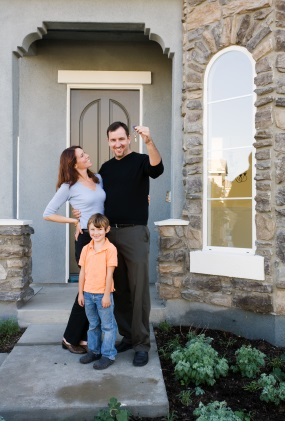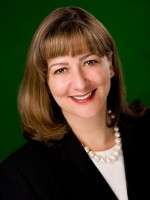
Reverse Mortgages Predicted to Rise
By Stevie Duffin Updated on 12/14/2012By Daniel Duffield
In 10 years, reverse mortgages will be as pervasive as individual retirement accounts, according to Scott Norman, vice president of Sente Mortgage’s reverse mortgage division. Norman predicts that with many more people investing in equity, reverse mortgage popularity will significantly increase in the next decade.
Norman estimates that education and the force of supply & demand will propel this popularity and that every extended family will have at least one reverse mortgagetransaction taking place.
“There’s still a great deal of education — for financial planners, certified public accountants, home health care professionals, real estate attorneys — that needs to be done,” Norman says. “We haven’t even scratched the surface yet.”
Reverse mortgages allow senior homeowners to tap into the equity which they’ve accumulated in their property and access this equity in cash. Unlike a traditional mortgage, borrowers need not concern themselves with paying off the mortgage, which only becomes due once a borrower no longer lives in the home, fails to uphold the terms of the mortgage, or passes away.
Recent surveys of demographics indicate that the consumer base for reverse mortgages has been growing stronger.
According to the Department of Health and Human Services, the senior population of citizens above 65 has increased noticeably by 15% in the last decade, growing to 40 million in 2010 from 30 million in 2000. Population projections estimate that the senior population will increase to 55 million in 2020, or a 36% rise from 2010 statistics. Furthermore, predictions for 2030 show a doubling of the senior population from 2000, totaling an estimated 72.1 million Americans which is roughly 19% of the U.S. population.
Norman stated that Sente Mortgage sees this increase as entirely positive and the natural financial option for American seniors within the current housing economy. Norman favors the Home Equity Conversion Mortgage Saver (HECM Saver) option, a type of reverse mortgage insured by the Federal Housing Administration (FHA) that requires much lower upfront costs than the standard HECM loan, at 0.01% of the home value. However, HECM Saver loans also limit the amount of money accessible to the homeowner.
Norman continued to state that the question of retirement for the aging baby boomer generation is an important one, and that many seniors will not be able to afford retirement without tapping into their home equity.
While he consents that reverse mortgages do not suit all senior homeowners, Norman related that the option may be the most realistic for most senior borrowers in the next decade, due to the safety and cost efficient nature of this option.
The Consumer Financial Protection Bureau (CFPB), in a report that highlights the risks of reverse mortgages for American consumers, pointed out how confusion over the program has led to some issues.
“Reverse mortgages are complex and have the potential to become a much more pervasive product in the coming years as the baby boomer generation enters retirement,” said CFPB Director Richard Cordray.
According to the CFPB report, although many consumers were conscious of reverse mortgages as an option, the majority did not fully understand the terms and concept. Due to the reverse mortgage program being the opposite of a traditional mortgage, many consumers could not fully understand the ways in which the loan balance and home equity was influenced, leading to some homeowners neglecting to pay taxes and insurance.
While Norman acknowledged the bureau in committing to the study, he did not approve of the bureaus lack of attention in not consulting consumers while conducting the study and developing these conclusions. As of yet, the CFPB has not responded to Norman’s claims.
In the CFPB study, approximately 70% of borrowers have been withdrawing the full equity amount in a lump sum rather than in monthly increments, which has raised some concern that borrowers will have financial difficulties later after exhausting these resources. The report expressed this concern in that seniors may not be able to afford tax payments, which could put many at risk of losing their homes, even in spite of borrowers not having any mortgage payments.
In order to better educate the public, the Nation Reverse Mortgage Lenders Association (NRMLA) has developed website that provides comprehensive help and thorough reverse mortgage information. In doing so, the NRMLA has partnered with the federal government during the campaign.
Norman, though he does not disagree with CFPB’s findings, does believe that the results will be as applicable in 20 years.
“Most of the seniors we deal with are smarter and wiser than we’ll be in the next 20 years,” Norman says. “These are smart people. They lived through World War II. We haven’t.”

Didn't find the answer you wanted? Ask one of your own.
-
 What You Need To Know About Escrow
View More
What You Need To Know About Escrow
View More
-
 President Obama Initiates Lower FHA Mortgage Insurance Premiums
View More
President Obama Initiates Lower FHA Mortgage Insurance Premiums
View More
-
 What is Quantitative Easing?
View More
What is Quantitative Easing?
View More
-
 The 5 New Mortgage and Housing Trends for Summer 2013
View More
The 5 New Mortgage and Housing Trends for Summer 2013
View More
-
 Fannie Mae profitability skyrockets
View More
Fannie Mae profitability skyrockets
View More
-
 Foreclosure protections for more soldiers after lawmakers draft bill
View More
Foreclosure protections for more soldiers after lawmakers draft bill
View More
-
 FHFA: HARP success follows low mortgage rates, February refinance volume strong
View More
FHFA: HARP success follows low mortgage rates, February refinance volume strong
View More
-
 Use of Mortgage Interest Deduction Depends on Where You Live
View More
Use of Mortgage Interest Deduction Depends on Where You Live
View More
-
 HUD will sell 40,000 distressed loans in 2013
View More
HUD will sell 40,000 distressed loans in 2013
View More
-
 Mortgage Principal Reduction Could Save Taxpayers $2.8 Billion
View More
Mortgage Principal Reduction Could Save Taxpayers $2.8 Billion
View More
-
 Mortgage Applications Regain Traction after Sluggishness, Rates Continue to Fall
View More
Mortgage Applications Regain Traction after Sluggishness, Rates Continue to Fall
View More
-
 HARP 3.0 Discussions Reveal Little Hope for HARP Update
View More
HARP 3.0 Discussions Reveal Little Hope for HARP Update
View More
-
 Home Prices Rise in February According to LPS Data
View More
Home Prices Rise in February According to LPS Data
View More
-
 Balancing Act: House Committee Hears Opposing Viewpoints Over Mortgage Interest Rate Deduction
View More
Balancing Act: House Committee Hears Opposing Viewpoints Over Mortgage Interest Rate Deduction
View More
-
 Near Record Low Mortgage Rates Buoy Housing Recovery
View More
Near Record Low Mortgage Rates Buoy Housing Recovery
View More
Related Articles
Ask our community a question.
Searching Today's Rates...

Featured Lenders
Lisa Stepp
RBS Citizens
Clifton Park, NY
Cameron Burke
Vision One Mortgage
Huntington Beach, CA
Kat Whitman
Whitman Met, Inc.
Sacramento, CA

